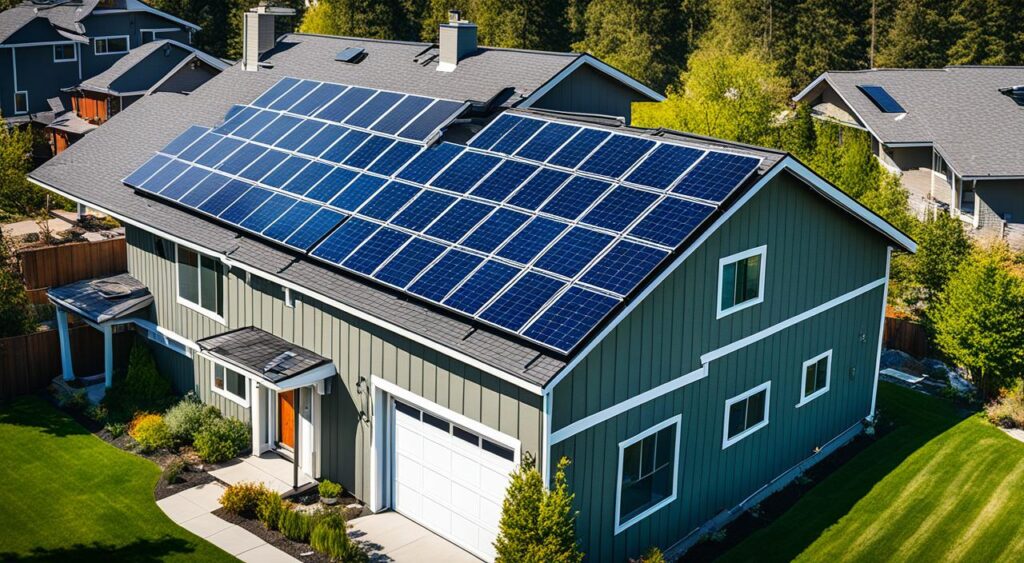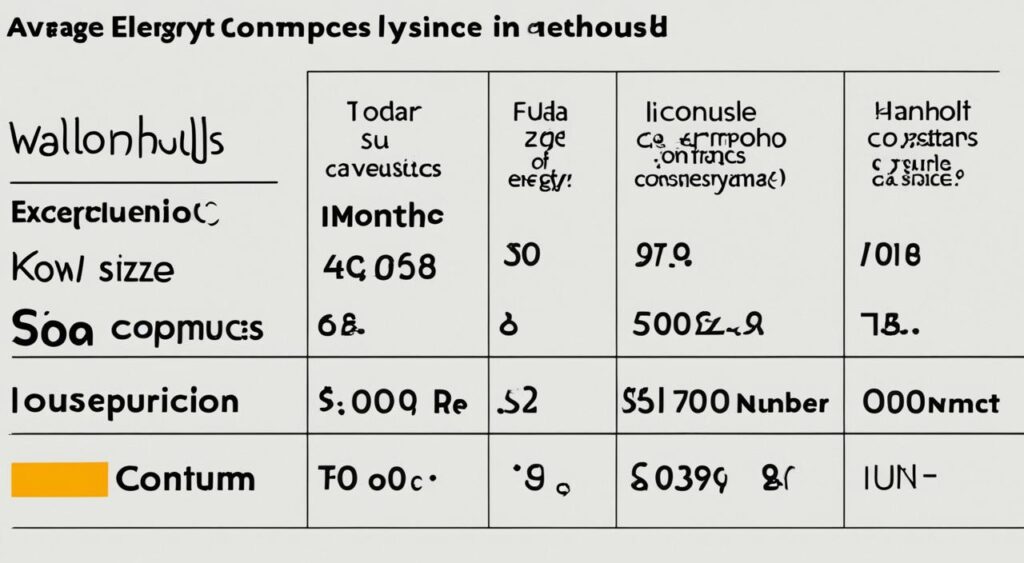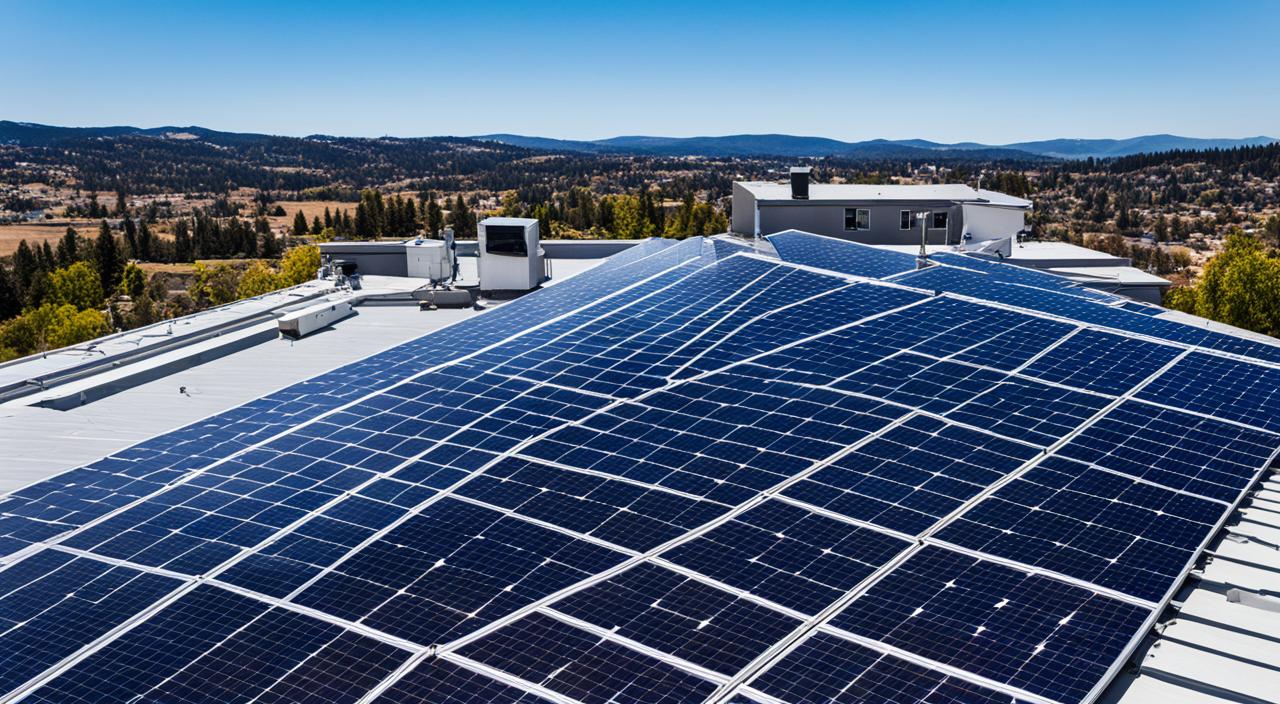How Many Solar Panels Do You Need?
We’re here to help you figure out how many solar panels you need for your home. We’ll look at important factors like your energy use, where you live, and the power of the solar panels. By the end, you’ll know how to size your solar system for your energy needs.
Key Takeaways
- Understanding your household’s energy consumption is crucial for determining the right solar panel system size.
- Solar panel wattage and your geographic location impact the number of panels needed to meet your energy needs.
- Calculating your solar energy production requirements can help you estimate the optimal number of solar panels.
- Proper solar panel layout and positioning can maximize the efficiency of your solar energy system.
- Considering future energy needs can help you future-proof your solar panel installation.
Introduction to Solar Panel Sizing
When looking into solar panels for your home, figuring out the right size is crucial. The number of panels you need depends on several things. Knowing these will help you create a photovoltaic system that fits your home energy consumption and uses the most from solar panel wattage.
Factors Affecting Solar Panel Requirements
Several key factors affect how many solar panels your home needs:
- Energy Consumption: What you use at home, like appliances and lights, affects how much power you need from solar.
- Roof Size and Orientation: The size and direction of your roof affect how many panels you can put up and where they should go.
- Local Climate and Sunlight Exposure: How much sun your home gets changes based on where you live and the weather, which impacts solar energy production.
- Energy Efficiency Goals: How much energy independence you want or how much solar power you aim to use will shape the size of your solar panels.
Thinking about these factors helps make sure your residential solar installation meets your energy needs and gets the most from your solar energy system.

Assessing Your Household’s Energy Consumption
Figuring out the right size for your solar panels starts with knowing how much energy your home uses. Look at your past electricity bills and how you use energy to find out what you need. This is key to picking the right solar system size.
Here are the main steps to check your home energy consumption analysis:
- Review your electricity bills: Collect your electricity bills from the last 12 months. Look at the monthly usage and cost. This shows your average and peak energy use.
- Identify your energy usage drivers: Check out the big energy users in your home like HVAC systems, water heaters, and big electronics. Knowing what uses the most energy helps with solar energy system sizing.
- Calculate your average daily energy usage: Add up your total energy use for the year and divide by 365. This tells you your daily energy needs. It’s important for planning your residential solar installation.
By looking closely at how much energy your home uses, you can pick the right solar panel size. This helps you get an efficient and cost-saving solar energy setup for your home.

“Understanding your energy usage is the first step towards maximizing the benefits of a residential solar installation.”
Understanding Solar Panel Wattage
The wattage of solar panels is key in solar power. Solar panels vary in wattage, which is important for figuring out how many you need. This part talks about the usual wattage for home solar panels and how it affects your solar setup.
Standard Solar Panel Wattage Ratings
Home solar panels usually range from 250 watts to 400 watts. The most common sizes are 300 watts and 350 watts. The wattage shows how much power a panel can make. It depends on the panel’s size, how well it works, and the number of solar cells it has.
Choosing the right solar panels for your home is important. The wattage affects your solar system’s size and how well it works. Knowing the usual wattages helps you decide how many panels you need for your energy use.
| Solar Panel Wattage | Typical Panel Dimensions | Efficiency Range |
|---|---|---|
| 250 watts | 60 x 36 inches | 15-17% |
| 300 watts | 65 x 39 inches | 16-18% |
| 350 watts | 70 x 41 inches | 17-19% |
| 400 watts | 75 x 44 inches | 18-20% |
Knowing about solar panel wattage, dimensions, and efficiency helps you choose the best setup for your home’s energy needs.
Calculating Your Solar Energy Needs
Starting with solar power means figuring out how much energy you need. You must look at your location and the panels’ efficiency. Knowing how much energy your panels will make helps make sure they match your home’s energy use.
Solar Energy Production Calculations
To find out your solar energy needs, think about a few important things:
- Your average daily energy use (in kilowatt-hours, or kWh)
- The average daily sunlight hours in your area
- The panels’ efficiency
- The total power of your solar system
With these details, you can figure out how much solar energy your system will make. Then, you can see how many panels you need for your home. This step is key for solar power calculations, solar energy system sizing, and making sure your residential solar installation fits your home energy consumption analysis.
“Proper solar energy system sizing is the foundation for a successful residential solar installation that meets your energy needs.”
After understanding your solar energy production, you can plan and install your solar power system. This ensures it works well for your home’s energy needs.
Factoring in Geographic Location
Your location is key when figuring out the best size for your home solar setup. The sunlight, temperature, and weather in your area affect how well your solar panels work. This means you need to think about these factors to get the most out of your solar energy system.
Here are important things to consider for your solar panel setup:
- Sunlight Exposure: How much sunlight your roof gets all day and all year affects your panels’ energy output. Places with steady sunlight need fewer panels to meet energy needs.
- Temperature Variations: High or low temperatures can change how well solar panels work. In hot places, you might need cooling to keep panels efficient. In cold areas, you might need special mounts to keep snow and ice off.
- Weather Patterns: Clouds, rain, and wind can also change how much energy your solar system makes. Places with lots of bad weather might need bigger solar setups to keep power steady.
Think about the weather and geography of your area to find the optimal rooftop solar capacity and solar panel layout. This way, you’ll make sure you have enough power and get the best value from your solar investment.
| Geographic Factor | Impact on Solar Panel Sizing |
|---|---|
| Sunlight Exposure | Places with steady sunlight need fewer panels for energy. |
| Temperature Variations | High or low temperatures can change how well panels work, so you might need cooling or special mounts. |
| Weather Patterns | Bad weather might mean you need a bigger solar setup for steady power. |
“Optimizing your solar panel layout for your geographic location is crucial to maximizing the efficiency and long-term performance of your residential solar installation.”
How Many Solar Panels Do You Need?
Figuring out how many solar panels your home needs is key for a successful solar setup. You want your solar system to match your home’s energy use and future needs. We’ll look at important factors to find the right number of panels for you.
Let’s go over the main things to consider for your solar system size:
- Your average monthly electricity usage
- The wattage of your preferred solar panels
- The amount of available roof space or land for panel installation
- Your geographic location and its impact on solar energy production
- Any plans for future energy-intensive appliances or additions to your home
With these points in mind, we can figure out the right solar panel requirements for you. This ensures your solar energy system sizing fits your needs perfectly. It also makes your residential solar installation more efficient and cost-effective.
We’ll look at your energy use and resources to suggest how many solar panels you need. This careful planning helps you make a smart choice. It leads to the right-sized solar energy system for your home.
Optimizing Solar Panel Layout
Designing the best solar panel layout is key to getting the most from your rooftop solar setup. By placing your panels just right, you can catch more sun and meet your home’s energy needs.
Rooftop Solar Panel Positioning
Where you put your solar panels on your roof matters a lot for their performance. Here are some tips to make your solar panel layout better:
- Orientation: Your panels should face south to get the most sunlight. This boosts your solar energy production.
- Tilt Angle: The best tilt for your panels depends on where you live and the sun’s path in the sky. Aim for a tilt between 30-45 degrees for the best energy.
- Shading Avoidance: Watch out for things like trees or buildings that could block your panels’ sunlight. Place your panels to avoid shadows for better efficiency.
- Space Utilization: Plan your panel layout to use your roof space well. You might need to stagger or arrange them differently to make the most of it.
Think about these points and work with a pro to get your solar panels set up right. This way, you’ll use your photovoltaic system design and rooftop solar capacity to their fullest.
“The placement of your solar panels can make a big difference in how much energy they produce. With careful planning and expert help, you can fully benefit from your residential solar installation and enjoy renewable energy for a long time.”
Considering Future Energy Needs
When planning your residential solar installation, think about your energy use now and what it might be in the future. This way, you can make sure your solar energy system sizing fits your needs as they change.
Think about adding new appliances or tech that use more energy. For example, getting an electric vehicle or a more efficient but power-hungry HVAC system. Your home energy consumption analysis should include these possibilities.
As your family grows or your life changes, your energy use might change too. By looking at your optimal solar panel layout and capacity, you can make sure your solar system can handle these changes.
To make sure your residential solar installation is ready for the future, consider these steps:
- Do a deep dive into your current and future energy needs, including any home improvements or lifestyle changes you plan.
- Talk to solar experts to figure out the right size and setup for your solar system to support future growth.
- Look into systems that have extra capacity or can be easily expanded later.
- Think about adding energy-saving upgrades and smart home tech to manage your energy use well.
By planning ahead and thinking about your future energy needs, you can make sure your residential solar installation keeps up with your changing needs for years to come.
Residential Solar Installation Process
After figuring out how many solar panels you need, it’s time to work with a pro to install them. We’ll help you through the process. We’ll give you tips on working with solar experts for a smooth, successful project.
Working with Solar Installers
Choosing a skilled solar installation company is key for a smooth setup. They know how to check your property, figure out your energy needs, and create a solar plan just for you. They’ll take care of all the paperwork, get the gear, and put in the panels in the best spot for energy.
Keep talking with your solar installers during the setup. Ask them questions and share your needs, like how you want it to look or your energy plans. Working together, you’ll feel sure your system fits your home and energy goals.

